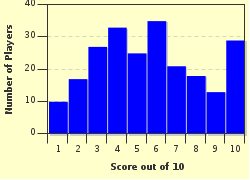Quiz Answer Key and Fun Facts
1. On the night of June 12, 1963, Medgar Evers, head of the Mississippi NAACP, pulled his car into his driveway. After emerging from his car, Evers was shot in the back and died from his injuries. Who was ultimately found to be the assailant?
2. On June 26, 1964, three civil rights workers (James Chaney, Andrew Goodman, and Michael Schwerner) were lynched and murdered. But, in which Mississippi county did these heinous murders occur?
3. On August 28, 1955, 14-year-old Emmett Till was abducted and lynched in the small town of Money, Mississippi. Emmett's body was recovered three days after his abduction. Because his body was so deteriorated, Emmett Till could only be identified by which distinguishing characteristic?
4. In the spring of 1961, the "Freedom Riders" (civil rights activists who rode public transportation systems-mainly buses-after it was declared illegal to segregate public transportation systems) journeyed to Jackson, Mississippi. They were arrested on the spot for "breaking the peace" and were subsequently sent to the Mississippi State Penitentiary at Parchman where they endured unthinkable cruelty. Which landmark case was brought against the superintendent of the Parchman Penitentiary because of the crimes committed against the Freedom Riders?
5. In September 1962, James Meredith won a lawsuit that allowed him to become the first African-American student at the University of Mississippi ("Ole Miss"). But when Meredith attempted to begin classes at the University of Mississippi he was blocked by the Governor of Mississippi. Who was the Governor who would not allow James Meredith into the University of Mississippi?
6. On the night of January 10, 1966, an attack was made upon Ferdinand Dahmer Sr. (leader of the Forest County chapter of the Mississippi NAACP) and his family. What type of attack was made upon the Dahmer family?
7. On May 14, 1970, a race riot broke out on the campus of a Mississippi college, resulting in the death of two students and the injury of twelve others. But, on which college campus did this riot occur?
8. On February 24, 1959, African-American Mack Charles Parker was arrested for the kidnap and rape of a pregnant white woman. During his incarceration, Parker was denied his right to a fair trial. On the night of April 24, 1959, several men entered Parker's jail cell and beat and shot him to death. When Parker's body was recovered on May 4, 1959, the FBI questioned men who they thought were involved in the murder, and they even obtained some confessions. But the trial concerning the murder of Mack Charles Parker never happened. Which Mississippi governor would not let the Mack Charles Parker murder case go to trial?
9. On August 13, 1955, Lamar Smith, a 65-year-old WWII veteran and civil rights activist, was murdered in broad daylight on the front lawn of the Lincoln County Courthouse in Brookhaven, Mississippi. Which activity concerning the civil rights movement was Lamar Smith involved in, that led to his untimely death?
10. On the night of May 7, 1955, George W. Lee, a minister and civil rights activist from Belzoni, Mississippi, was murdered in his car in a drive-by-shooting. George W. Lee had had reason to suspect that harm might have been coming his way. What had happened just a few days before the murder to cause George W. Lee to fear for his life?
Source: Author
BlueCheer
This quiz was reviewed by FunTrivia editor
bloomsby before going online.
Any errors found in FunTrivia content are routinely corrected through our feedback system.

